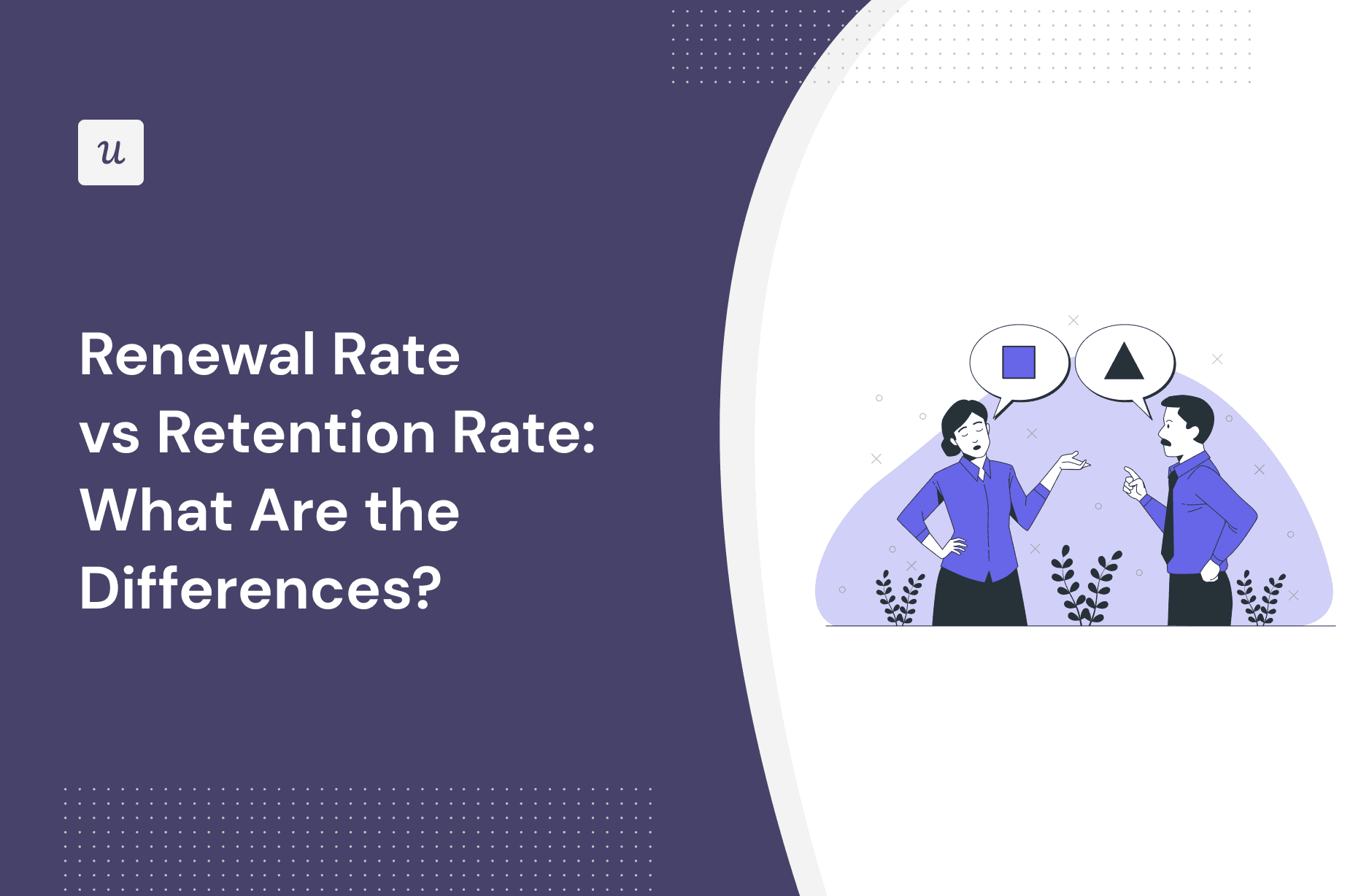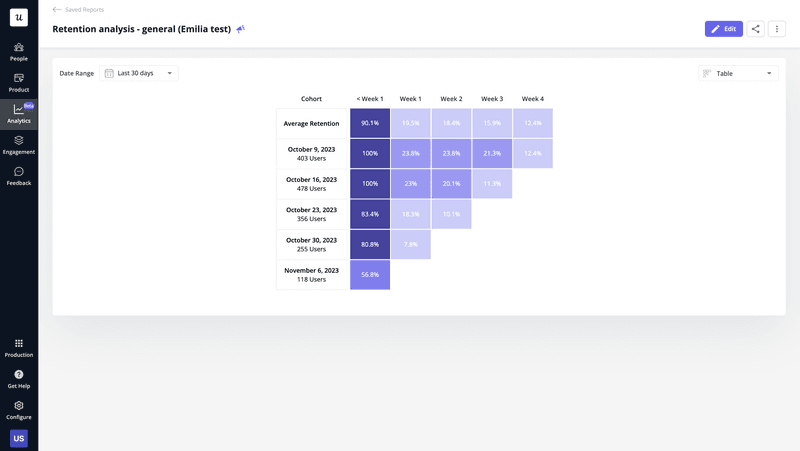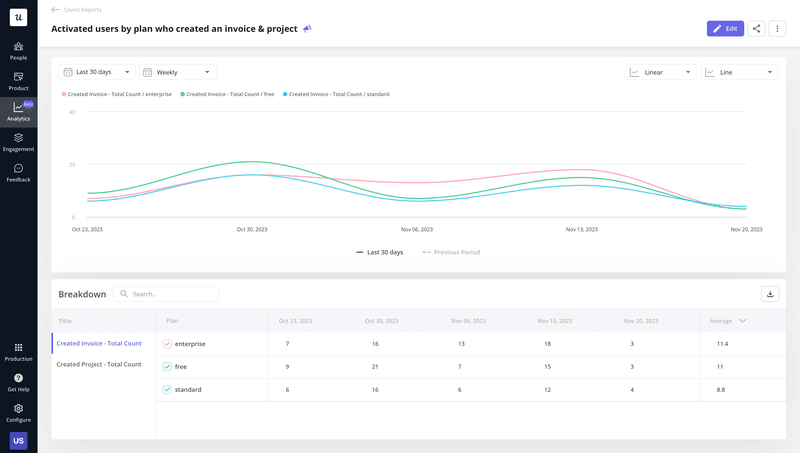
One of the most pressing questions of customer success is how many customers stick around. After all, keeping all the customers you already have will be much cheaper than trying to acquire new customers.
In this guide, we’ll show you the difference between renewal rates and retention rates so you know which product analytics to focus on!
Try Userpilot Now
See Why 1,000+ Teams Choose Userpilot

What is the renewal rate?
The renewal rate is the percentage of customers who renew their subscriptions at the end of each period. A renewal rate of 80% or higher is considered a positive indicator of customer retention.
What is the retention rate?
Retention rate is the percentage of existing customers who continue to use a product over a specific time period. This statistical measurement of the number of customers who stick with SaaS businesses can be impacted by the churn rate of different customer cohorts.
How to calculate renewal rate?
You can calculate your customer renewal rate by dividing the number of customers who renewed by the total number of customers who had the opportunity to renew their subscriptions, then multiplying that number by 100 to get a percentage.

Customer renewal rate calculation example
If there were a total of 250 subscriptions up for renewal and 180 of those customers renewed, then you would have a 72% renewal rate. You would calculate this formula as 180 (renewals) / 250 (contracts up for renewal) x 100 = 72.
How to calculate retention rate?
To calculate the customer retention rate, you’ll need to take the number of paying customers and deduct the number of users acquired during the same time period, then divide by the total number of users at the start of that period.
Alternatively, you can use a retention table to contact cohort analysis at a glance.

Customer retention rate calculation example
For example, if a company starts with 1000 customers and loses 100 but gains 200 new customers in the same period, then the retention rate would be (1,100 – 200) / 1000 ) x 100 = 90%. It’s important to deduct newly acquired users from the formula to ensure that acquisition doesn’t mask high churn rates.
Renewal rate vs retention rate
While the percentage of customers who renew their subscription and the percentage of customers who remain with a SaaS company may seem the same thing, these are two different metrics with different calculation methods.
The renewal rate is calculated while ignoring the contract start date and instead only looking at the percentage of customers re-signed when given the opportunity. On the other hand, the retention rate excludes new customers from the calculation, so you get an accurate view of churned customers.
Furthermore, the renewal rate measures data that are only applicable to SaaS companies and other subscription-based business models. Conversely, retention rate can be used for a broader set of business models since it simply measures the organization’s capacity for keeping customers.
Also of note, a renewal rate is calculated by subscription period while the retention rate can be calculated for multiple periods. Lastly, renewal and retention rates differ because the former only factors in paid accounts while the latter measures all retained customers throughout the customer base.
How to improve both renewal rate and retention rate for SaaS?
Building an effective retention strategy that helps you keep the company’s customers from jumping ship to a competitor requires that you stay on top of both metrics. The sections below will walk you through three effective ways to improve both your net renewal rate and user retention.
Deliver personalized experiences across the customer journey
If you constantly gather and analyze customer data then you’ll be able to provide a personalized customer experience — which, in turn, leads to increased retention rates. One example would be launching a product feedback survey asking customers about a recent update or new feature.

Analyze customer behaviors to understand what drives retention
Trend reports can help you monitor how product usage patterns change over time or across different plans. This type of user behavior analytics helps you put together more effective customer retention strategies.
After all, it’s a lot easier to retain customers when you understand which features they value most.

Offer contextual help to reduce churn
Another effective way to reduce churn rates is to provide contextual help for users who might be struggling to use your product. For instance, you could trigger in-app guidance flows whenever users try a feature for the first time to ensure that they don’t get frustrated and turn into detractors.

Conclusion
As you can see, the revenue renewal rate is a critical measure — especially for SaaS products that rely on the company’s ability to retain users. Working on retention will help you keep your customer count high and ensure that your happy customers remain loyal while you seek to acquire new users.
Fail to do this and you’ll only be able to gain new customers/users at the cost of losing existing ones.
If you’d like to gather customer data, track product metrics, and offer in-app guidance all from a single platform, then it’s time to get your free Userpilot demo today!






